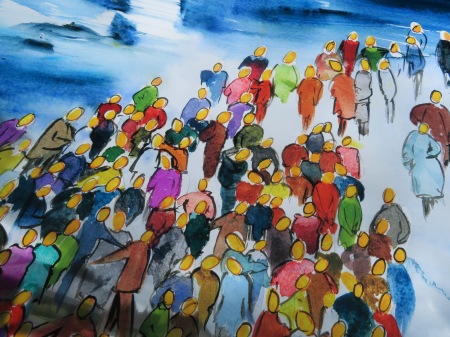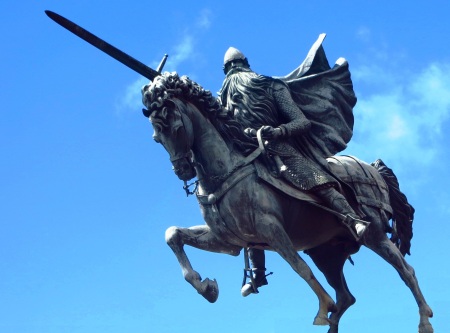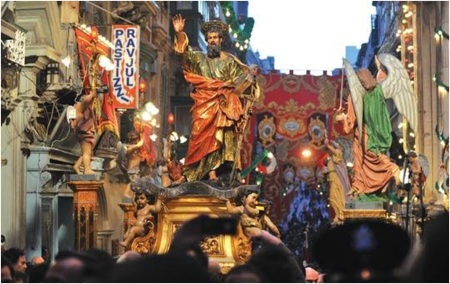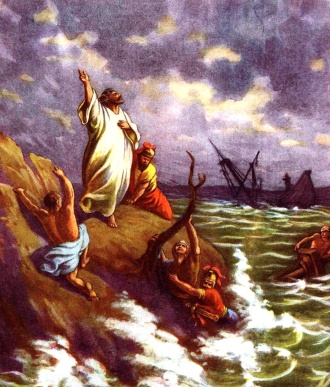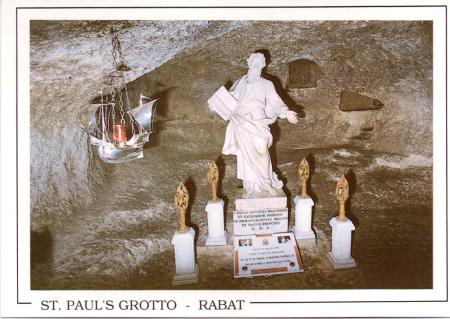Have Bag, Will Travel

Blog Stats
- 1,207,291 hits
Top Posts
-
Recent Posts
Flag Counter
Search my Site
-
Join 6,916 other subscribers
Social
Category Archives: Knights of St John
Red Pictures from Portugal
Posted in Cathedrals, Europe, History, Knights of St John, Portugal, Postcards, Travel, World Heritage
Tagged Culture, Life, Lisbon. Tomar. Porto. Coimbra
France, Cinderella and Joan of Arc
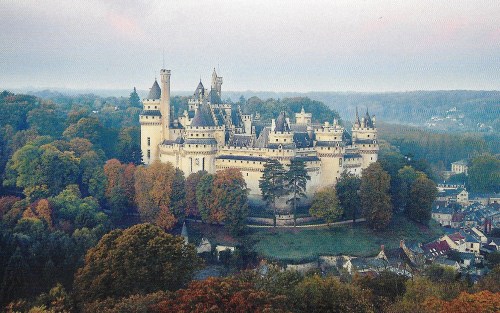
“This enchanting landmark is an architectural blend of many European styles, from 13th Century French Fortress to late Renaissance Palace. Since it was inspired by no single structure, Cinderella Castle represents them all” – Disney Official Souvenir Book
Finding a castle to visit is not difficult in France because, according to the Official Tourist Board, there are almost five-thousand but it seems to me to includes a lot of questionable small Chateaux in that number. For comparison there are eight hundred in the United Kingdom and just about two thousand five hundred in Spain.
In the 1960s, so the story goes, Disney ‘imagineers’ travelled throughout Europe looking for the perfect castles on which to model Cinderella’s Castle in Walt Disney World.

The lead architect for the project was a man called Herbert Rymanand and what makes this story a bit of a mystery is that there is no documentary evidence to establish exactly which castles he visited and indeed which of them became the inspiration for the Disney Magic Kingdom centrepiece. Disney themselves do no more than confirm that Cinderella Castle was ‘inspired by the great castles of Europe’, but they never explicitly say which one.
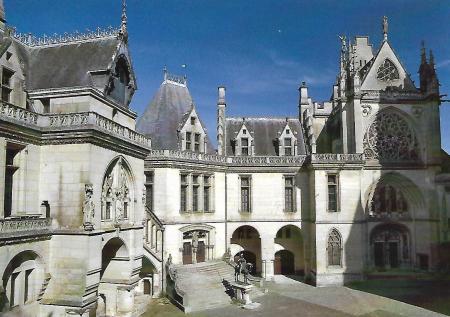
I mention this because today I was planning a visit to the nearby town of Pierrefonds which is famous for its castle. Actually that is just about all that it is famous for and without the castle I doubt that very many people would take the detour to go there.
The castle itself is rather magnificent, statuesque and grand, stout walls and conical turrets and if the Disney architects had stopped by Pierrefonds on their fact finding tour of Europe then I suggest that they would have gone no further in their search for inspiration for Cinderella’s Castle.
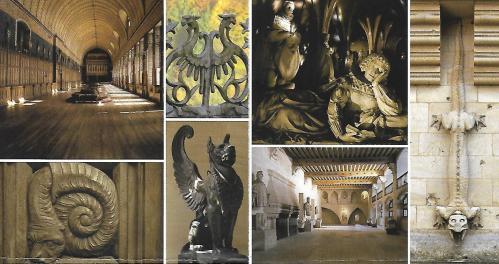
After Pierrefonds we continued to nearby Compiègne which turned out to be another attractive but rather unremarkable town but my reason for visiting was to see just one thing. A statue of Joan of Arc. There are statues of the Maid of Orleans all over France but I especially wanted to see this one because it has some special significance.
A bit of background: Joan was born in about 1412 into a relatively well-off peasant family in Donrémy in northern France somewhere near the border of Lorraine. At this time English troops were running riot through France and at one point raided and plundered the village of Donrémy and the d’Arc family had to flee into exile. During this time Joan convinced herself that she had a visitation of saints and angels and heard patriotic voices that told her that she was chosen by God to save France. Joan kept hearing the voices for a further three years and when she was finally convinced she left home and presented herself to the authorities as the saviour of France with a mission to put the Dauphin on his rightful throne.
Word of Joan quickly spread and it was claimed that she was the embodiment of a prophecy made by a mystic called Marie d’Avignon, that a ‘virgin girl from the borders of Lorraine’ would come to save France. To test whether Joan was genuine the Dauphin had her questioned by a committee of clergymen and asked a group of respectable ladies to test her virginity.
She passed both tests and with religious sincerity and sexual inexperience being considered more suitable qualifications than an education at an appropriate military academy she was given a suit of made (maid?) to measure white armour and an army of forty thousand men and sent to fight the English at Orléans.
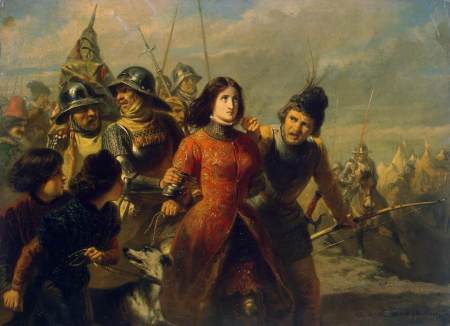
Joan rejected the cautious strategy that had characterized French leadership and attacked and captured the outlying fortress of Saint Loup, which she followed the next day with a march to a second fortress called Saint Jean le Blanc, which was found deserted. The next day with the aid of only one captain she rode out of the city and captured the fortress of Saint Augustins and two days later attacked the main English stronghold and secured a stunning victory that took everyone by surprise.
After that there was a seemingly endless run of French victories as the English and their Bugundian allies fled from the field of battle whenever challenged by the invincible Maid of Orléans fighting, it seemed, with God by her side.
From here however things started to go wrong for Joan and she was betrayed by the King, Charles VII, who was beginning to find here her to be a bit of a nuisance and to get her out of the way he dispatched her on a hopeless mission to fight a Burgundian army right here at (which brings me conveniently back to) Compiègne, where she was defeated by a much stronger army, captured and taken prisoner and so began her sad journey towards the bonfire.
You can read my story of Joan of Arc right here.
I found the statue and with nothing else to detain me in Compiègne I headed back to the campsite at Vic-Sur-Aisne.
 0
0
Ireland, Holy Shrine of Knock – Pictures
Posted in Arts and Crafts, Cathedrals, Childhood, Eire, Europe, History, Ireland, Knights of St John, Natural Environment, Postcards, Travel, United Kingdom, Vikings, World Heritage
Tagged Culture, Holy Shrine o Knock, Knobs and Knockers, Knock, Pilgrimage, Postcards, Religion. Life, Santiago de Compostela
Malta, The Feast of St Paul’s Shipwreck
Malta is the most religious country in Europe…
…it has more religious public holidays than any other in Europe and 10th February is especially important because this is the The Feast of St Paul’s Shipwreck which was bad luck for Paul but good fortune for Malta because it brought Paul to the island in the year 60AD and he then went promptly about converting the island to Christianity.
Saint Paul is the Patron Saint of Malta.
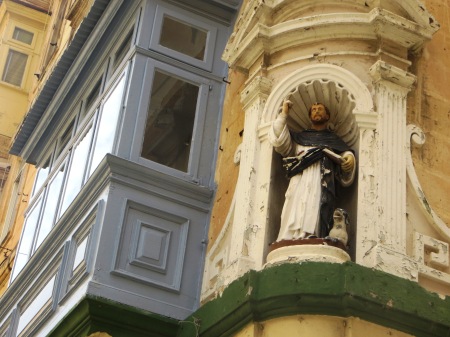
In a survey in 2010 95% of the population of Malta said that they were practising Catholics. Nearby Italy (where the Pope lives) only registered 74%. The least religious countries are all in the north where over 80% of respondents in Estonia, Norway, Denmark and Sweden all said that religion isn’t important!
Interestingly this survey didn’t seem to include the Vatican State where there is a population of only about five hundred official citizens and three-quarters of these are clergy so I imagine the response would surely have been no less than 100%
There have been four Papal visits to Malta, the last in April 2010 to celebrate the 1,950th anniversary of the shipwreck of St Paul on the island. His ship ran aground in St Paul’s Bay (obviously) and I give you my word that I am honestly not making this up but in 1997 I too suffered the same fate. Taking a speed boat ride with Tony Oki Koki ‘Mr Crazy’ Banis the boat broke down and we were stranded on the very same rock in a storm for twenty minutes or so until thankfully rescued.
Last year I visited the town of Rabat to visit his grotto next to his church where he is supposed to have spent his time on Malta in hiding from the Roman soldiers who were searching for him – rather like Saddam Hussein, two thousand years later hiding from the American troops – also in a cave.
Posted in Cathedrals, Europe, History, Knights of St John, Literature, Malta, Postcards, Travel, World Heritage
Tagged Culture, Denmark, Gozo, Life, Malta Postcards, Religion, Roman Catholicism, Saddam Hussein, Scandinavia Religion, St Paul Malta, Sweden, Valletta
Entrance Tickets, The Red Tower at Mellieha, Malta
The Red Tower, or to give it its proper name St Agatha’s Tower, is a large imposing watchtower in Mellieħa, the sixth and most important of a coastal defence system of fortifications and small castles built by the Knights of St John during the seventeenth and eighteenth centuries.
St. Agatha’s Tower turns out to be the last large bastioned tower to be built in Malta to provide early warning of attack and to alert the defence of the city of Valletta.

The city of Valletta was built by the Knights of St John who were granted the island in 1530, seven years after being expelled from Rhodes by the Ottoman Turks. Trouble with Turks however continued to follow the Knights and in 1565 the Ottomans laid siege to their new home on Malta with the intention of establishing a base from where they could conveniently advance into Europe.
But as in Rhodes and at Bodrum the Knights proved a tough nut to crack and the Great Siege of Malta which lasted from May until September ended with the defeat and retreat of the Turkish army.
The rest of Europe was so grateful for this stoic resistance that it began to provide funding for the Grand Master of the Order, Jean Parisot de Valette, to plan and construct a new fortified city that was to be called Valletta in his honour. Although it was designed principally as a fortress city with great battlements and armed bastions the architects also found time and paid attention to good design and within the walls they built a Baroque style city with churches, palaces and fine mansions, laid down gardens and designed grand plazas at the intersections of the grid pattern of the streets. It was certainly worth protecting.
Saint Agatha’s Tower was built between November 1647 and April 1649 and consists of a square castle with four corner towers. Cannon ports in the turrets gave interlocking fields of fire commanding the base of the walls and the gateway, with other large artillery ports in the faces of the main tower.
The tower is situated in a commanding position on the crest of Marfa Ridge at the north west end of Malta, overlooking the natural harbour and potential enemy landing site of Mellieħa Bay, with clear views over to Comino and Gozo, and also eastward to the line of watchtowers along the north shore of Malta that linked it with the Knights headquarters in Valletta. It was the primary stronghold in the west of Malta, and was manned by a garrison of thirty men, with ammunition and supplies to withstand a siege of forty days.
It continued to have a military purpose throughout the British period, and was manned during both World Wars. From the British period it continued its military function being used as a radar station by the Armed Forces of Malta.
Although the children would have preferred to stay at the hotel and spend all day in the swimming pool I thought it was important for them to get out a little and learn something about Malta. The girls weren’t too keen and Patsy (the clever one) feigned a stomach ache to get out of it, Molly (not so clever) didn’t think fast enough to find an excuse but William is rather fond of forts and castles so luckily he was enthusiastic about the visit. Molly was dragged along complaining.
St Agatha’s Tower on a previous visit to Malta in 1997…
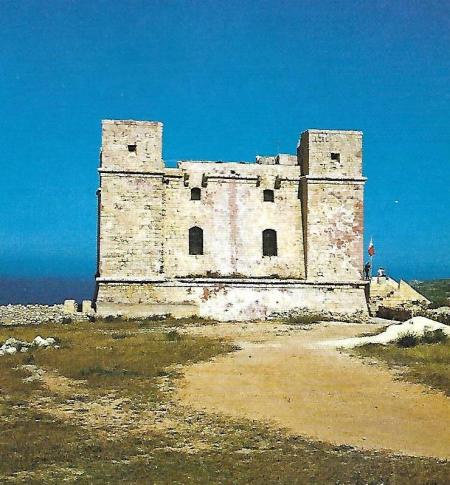
It was just a short walk but it was all uphill so, in the heat, it did become rather a drag by the time we reached the steep flight of steps which took us to the entrance.
There are some good displays inside and some imaginative reconstructions but the best bit is the climb to the roof and the reward of sweeping views in all directions as far as Victoria on Gozo to the north and Valletta to the south and it was easy to understand why they chose this spot for the tower – no one was going to slip in unnoticed that’s for sure.
It didn’t take long to see all that there was to see and with the promise of an ice cream down at the beach after the stroll back there were a lot less complaints on the return walk.
The children celebrate the end of the walk and return to the swimming pool…
Postcards of 2016
Posted in Arts and Crafts, Beaches, Europe, Food, Greece, Greek islands, History, Hotels, Knights of St John, Literature, Malta, Morocco, Natural Environment, Postcards, Travel, United Kingdom, World Heritage
Tagged Andalucía, Borth Wales, Cobh, Costa Blanca, Costa Calida, Costa del Sol, Culture, Delos, Essaouira, Life, Postcards, Yorkshire
Monday in Malta
“Valletta equals in its noble architecture, if it does not excel, any capital in Europe. The city is one of the most beautiful, for its architecture and the splendour of its streets that I know: something between Venice and Cadiz.” Benjamin Disraeli







